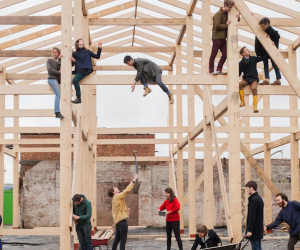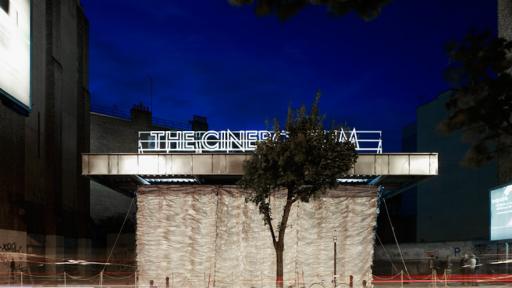In December 2015, London-based collective Assemble became the first ever architecture studio to win the prestigious Turner Art Prize for their Granby Four Streets project in Liverpool. In February 2016, they explained why on the Design Indaba Conference Stage.
Based in Sugarhouse Studio in London – where they work in a multidisciplinary environment with a range of collaborators, from highly skilled professionals to academics and craftsmen – Assemble work at the intersections of art, design and architecture. Their projects span a range of scales from furniture to installations to theatre design, work space and civic spaces.
“We feel that the city can be a very disempowering place,” says Strelitz, “and as a practice we’re really interested in addressing the disconnection between the public and the way that our buildings and the built environment are made. After all, cities are manmade and material.”
They have developed a number of strategies that address the gap between the people and the space and make cities more malleable. Instead of having a city that is opaque and unquestionable, Assemble work to spotlight invisible spaces and make the city a playground of possibilities.
Interestingly, non of the 16-plus members of Assemble are fully qualified architects. Their projects are largely temporary installations rather than permanent buildings, self-initiated, and open to the involvement of the public and of people with various skills and interests.
They’ve reinterpreted a cinema in a petrol station in the Cineroleum project; created a arts venue and public space underneath a motorway flyover in Folly For A Flyover; and an evolving (supervised) play space consisting of mud, saws and fires for cooking in Baltic Street Adventure Playground.
In Granby Four Streets, Assemble worked with the residents of a rundown council estate to uplift the area by cleaning, painting, establishing a local street market and giving neglected spaces new purpose.
“It that void created by the authority withdrawing,” says Binning, “it really gave a huge amount of freedom to the residents in the area to take initiative and really start thinking about the how the future of the area might develop in a different way.”
It was not only the buildings that were rebuilt in Granby, but the communities as well.









